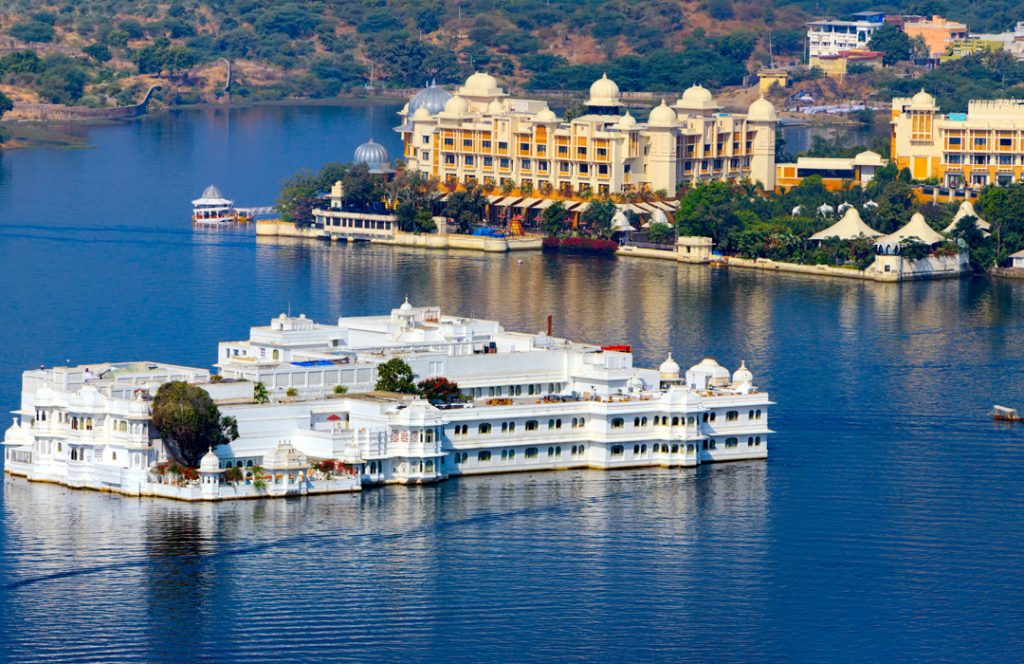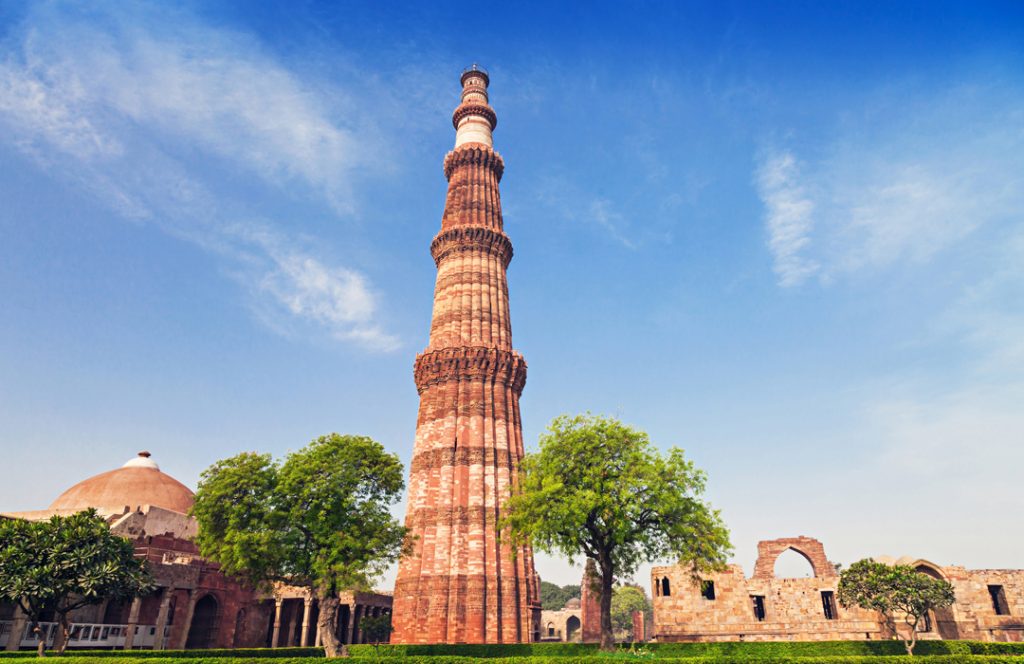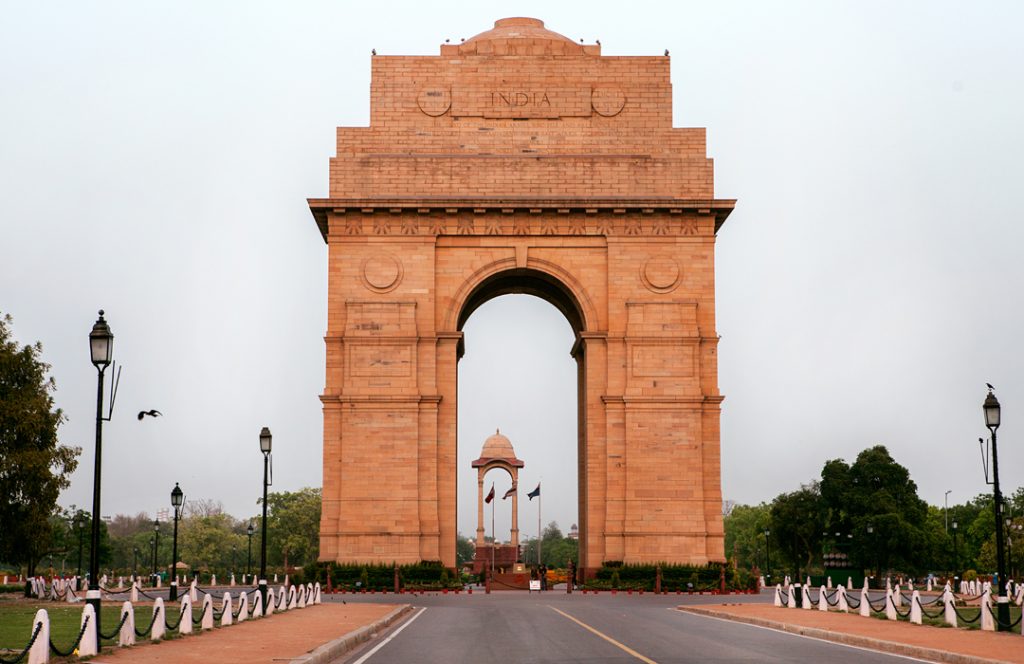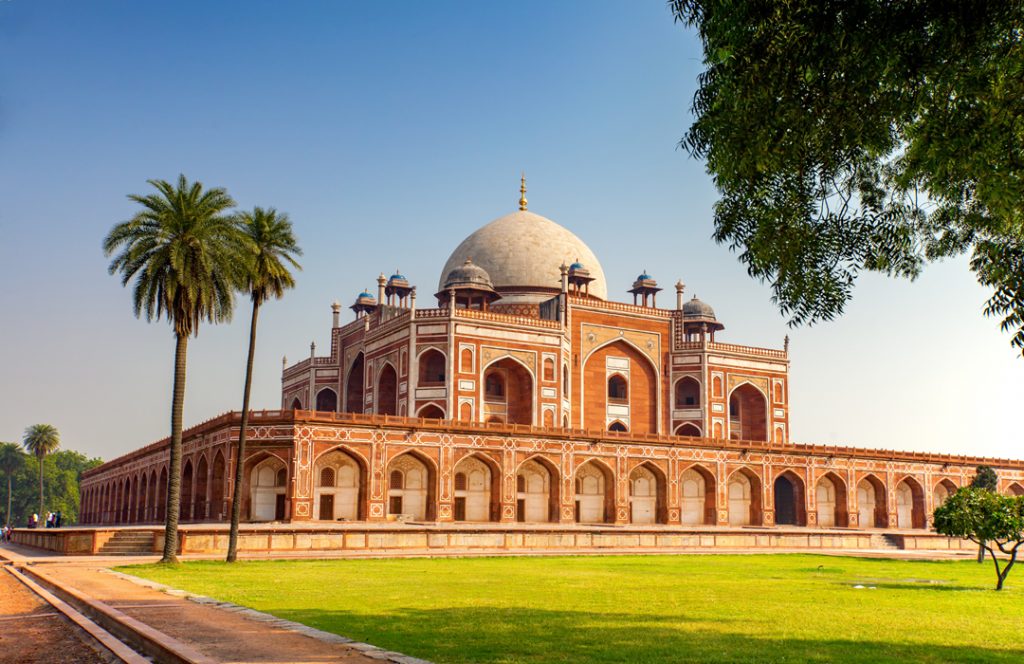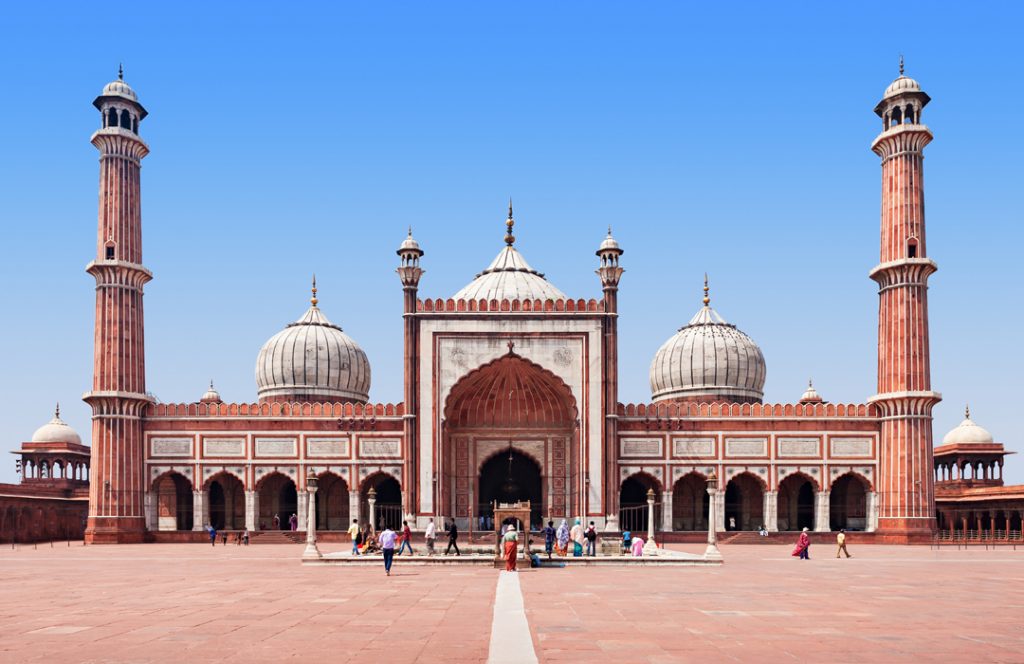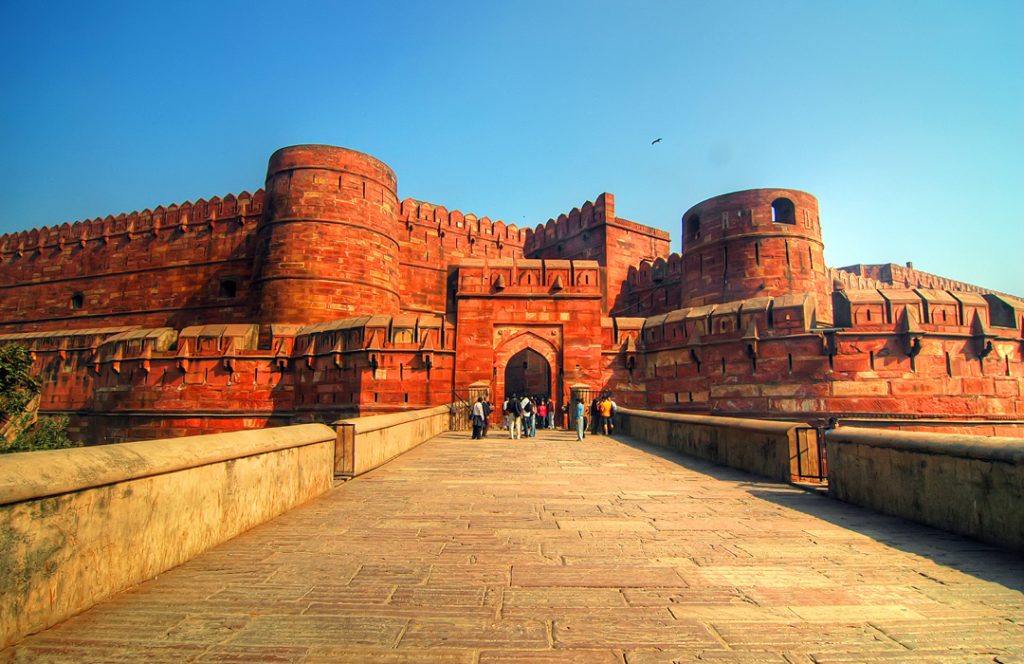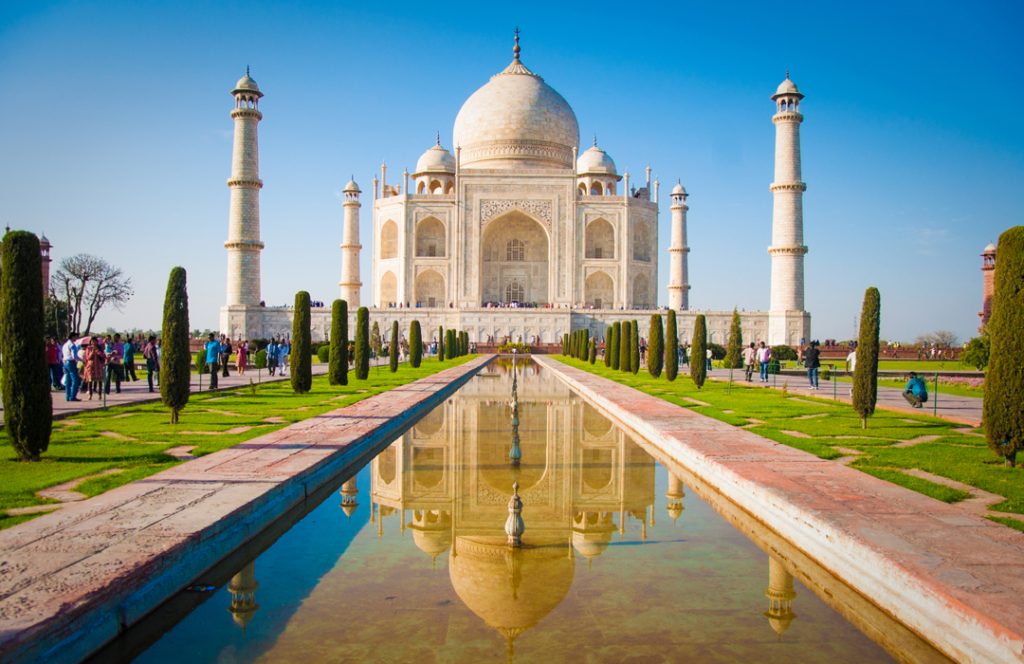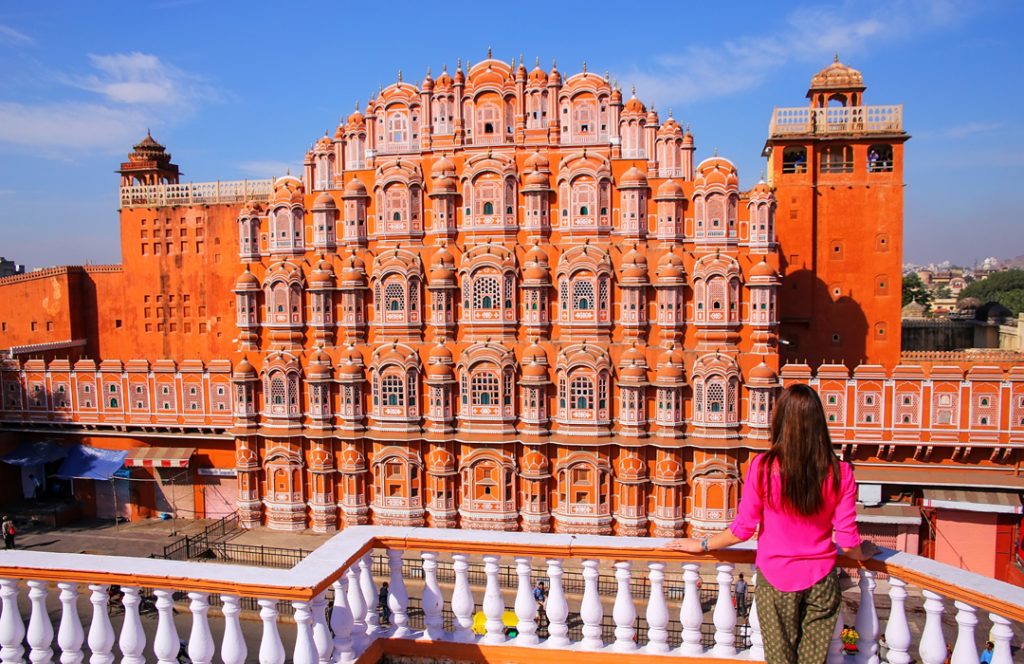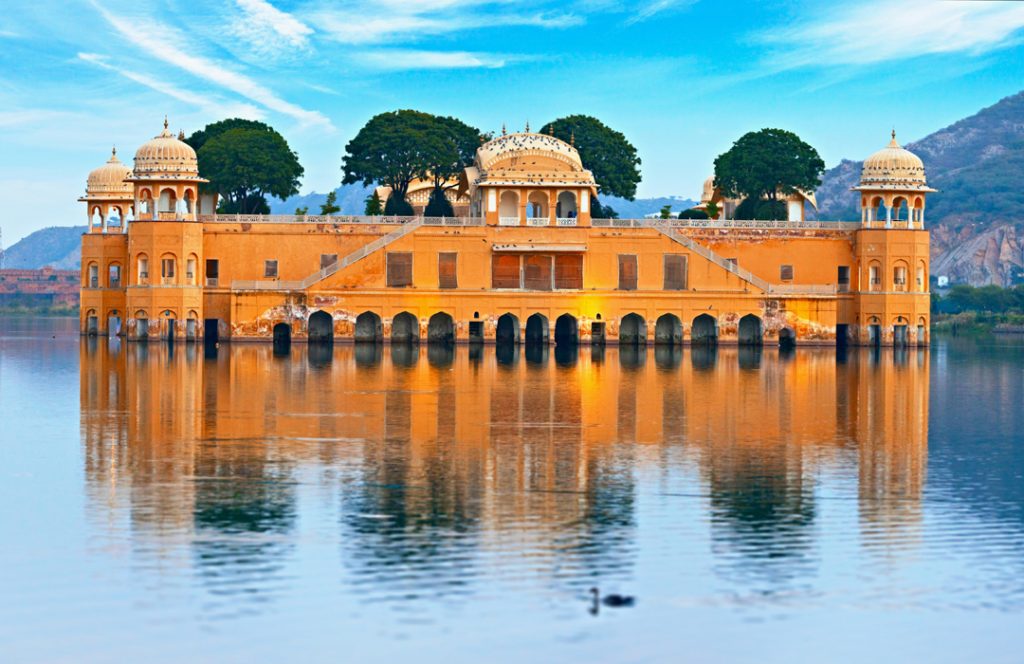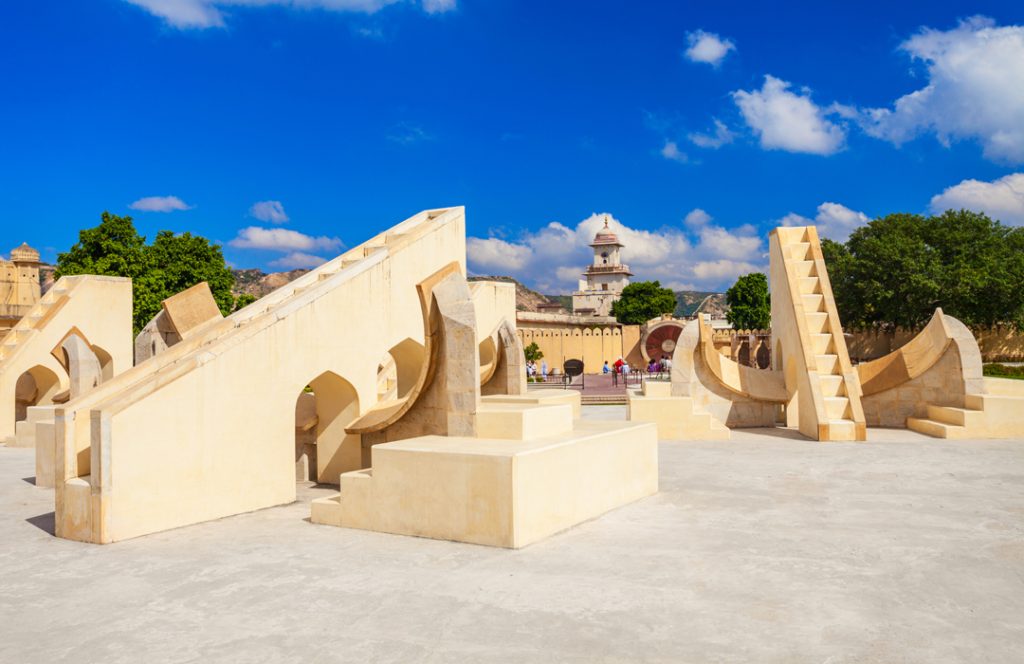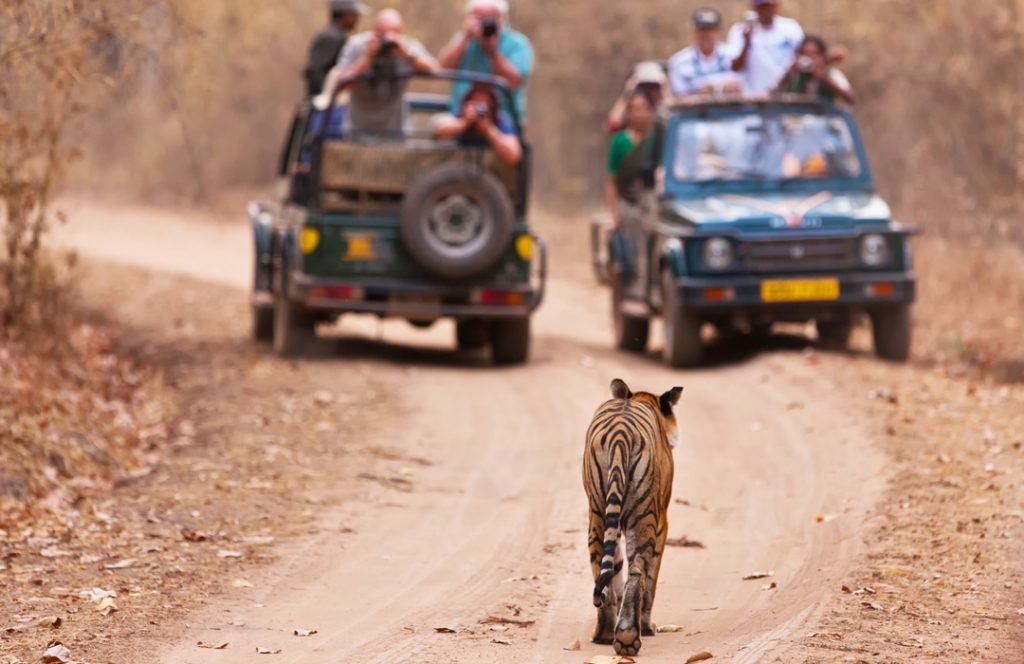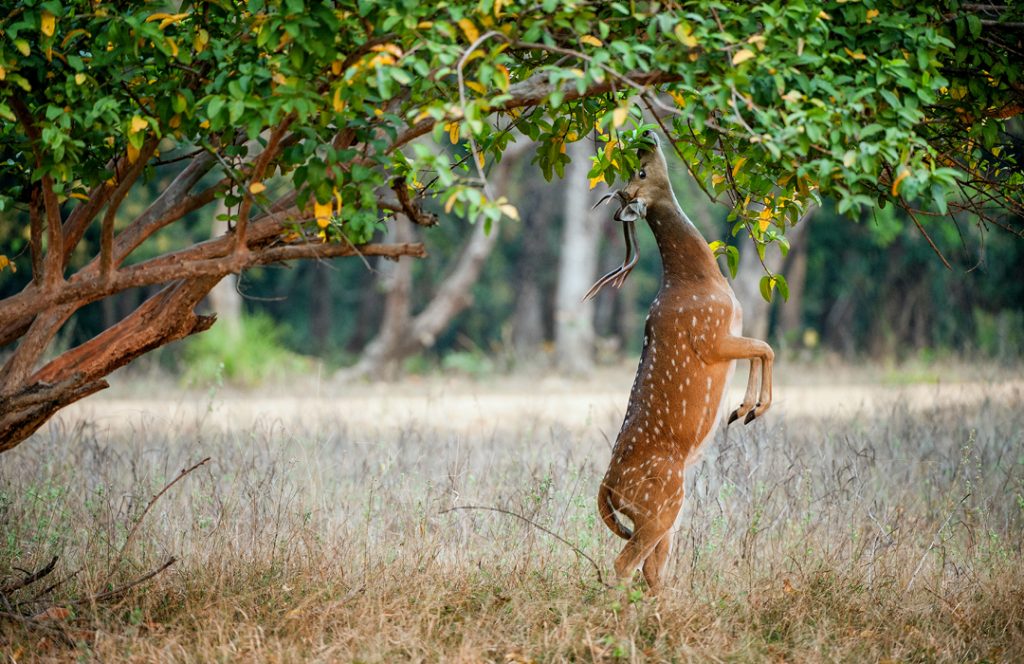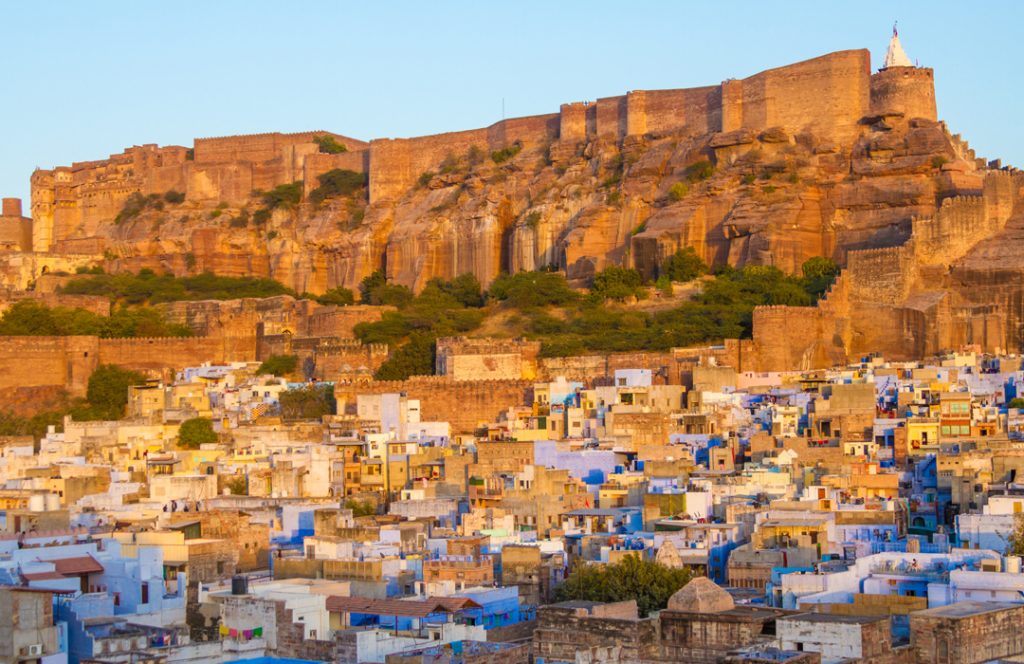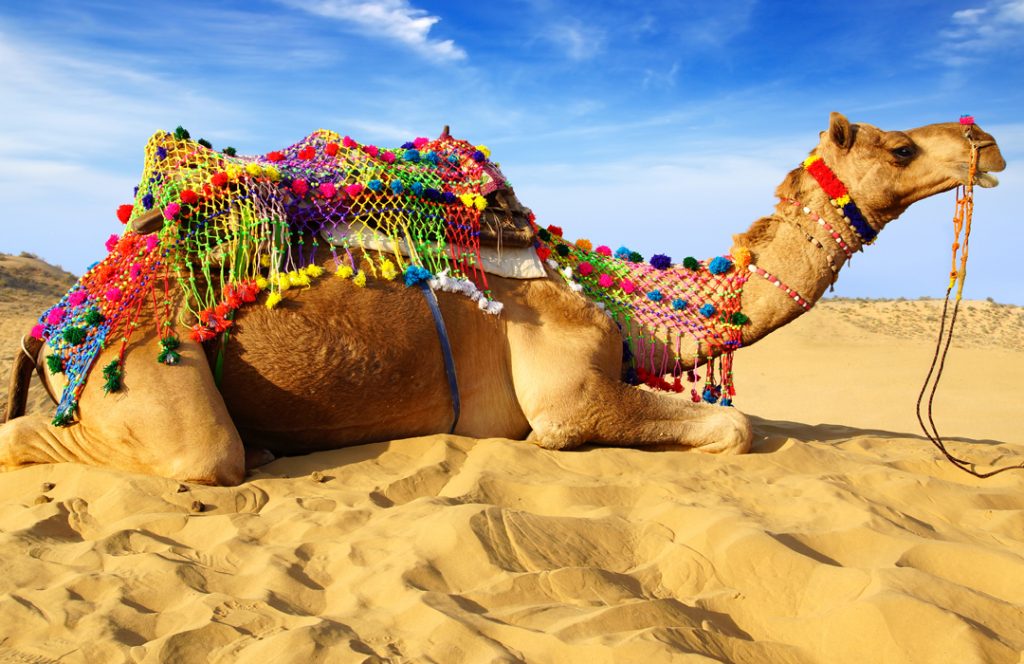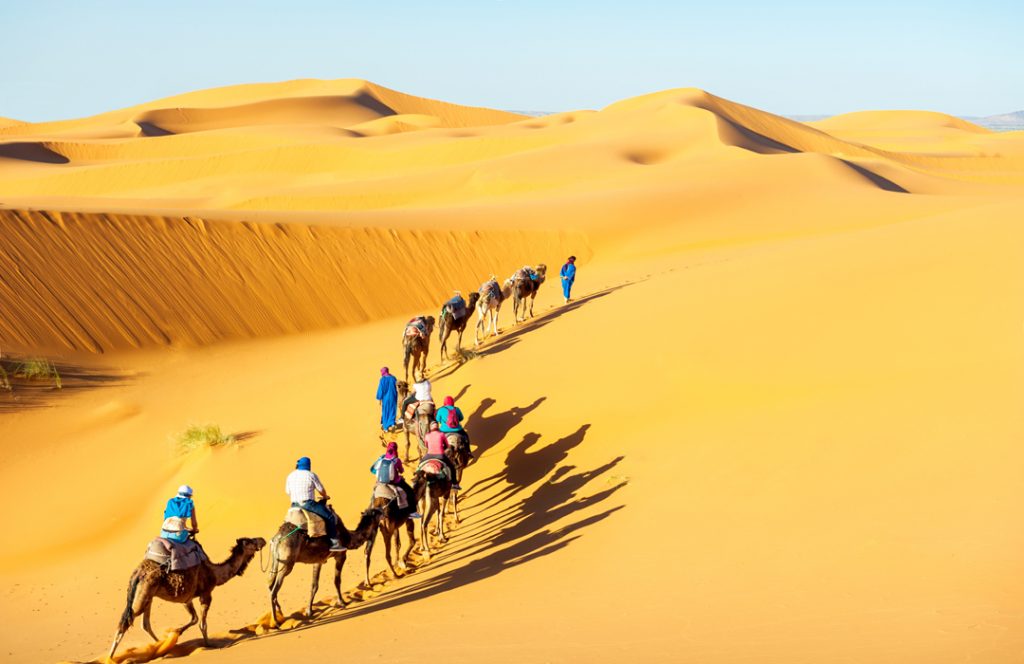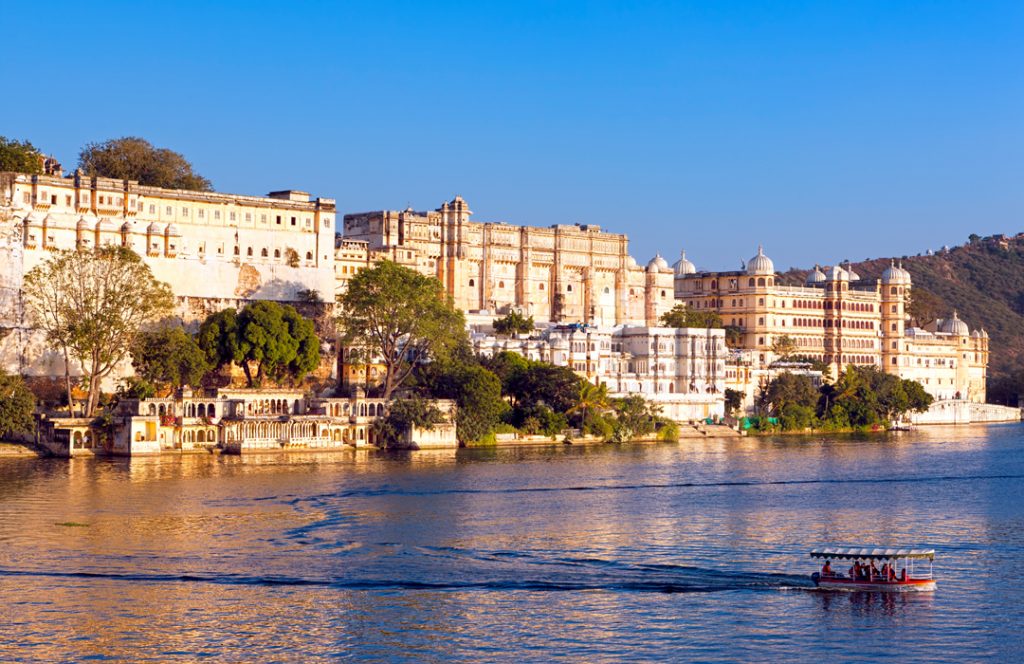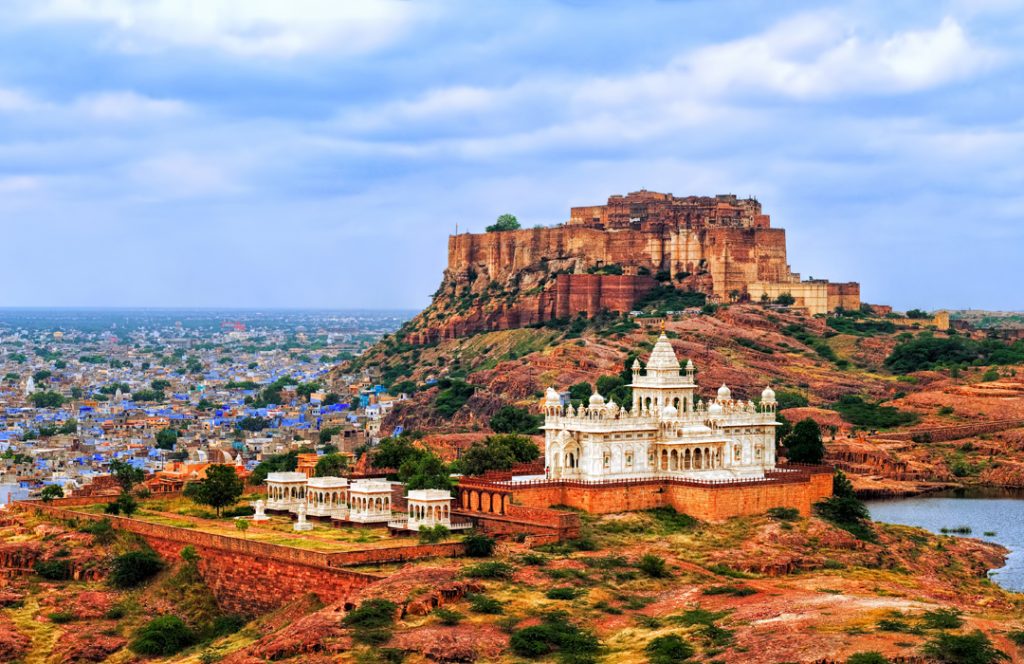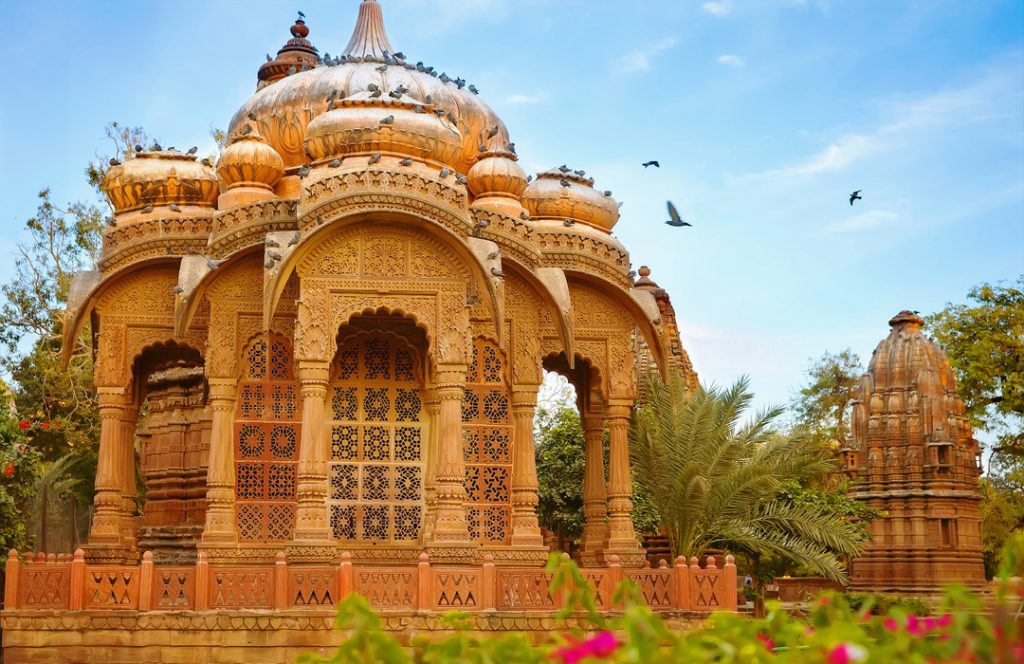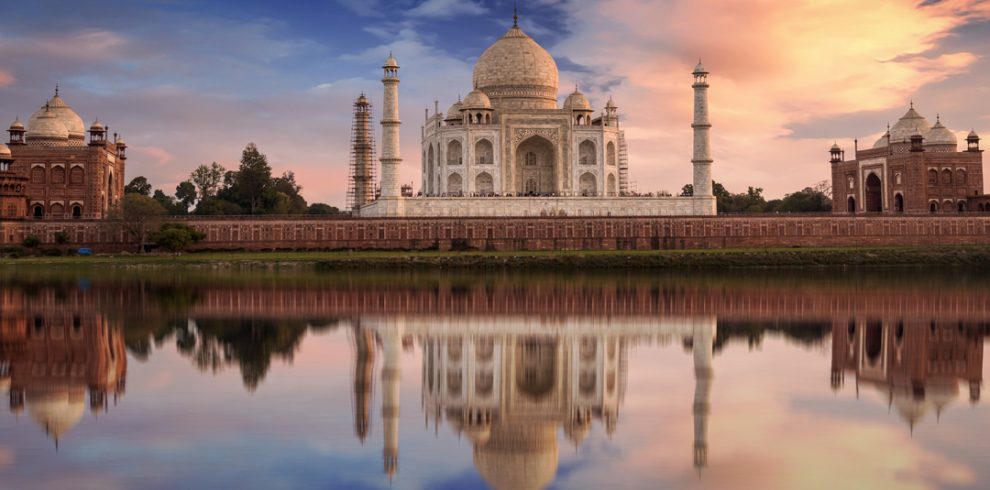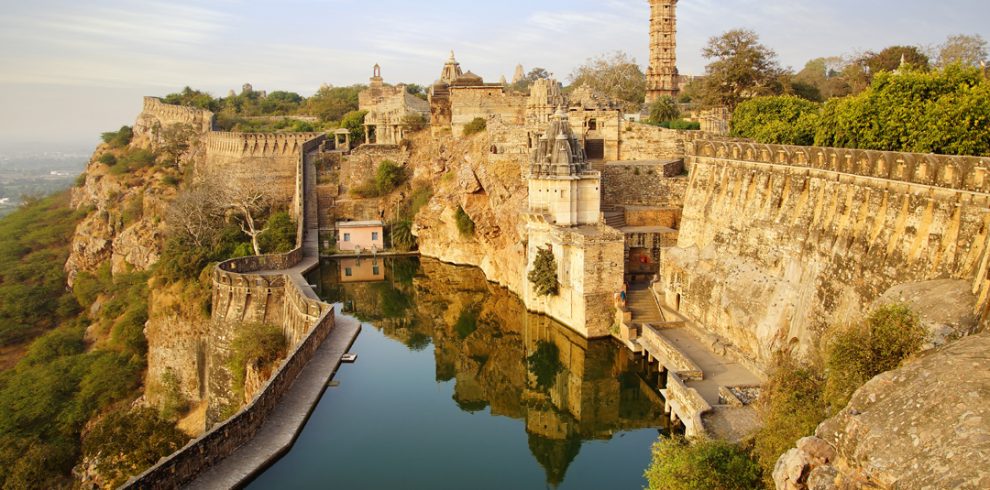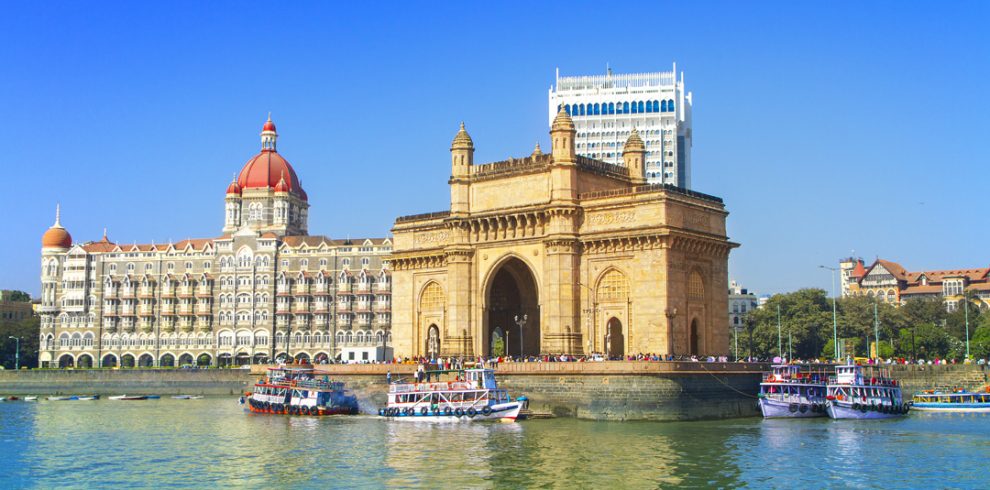Itinerary
Welcome to India! On your arrival, after you collect your luggage, you will be greeted by our travel facilitator at the airport. You will then be taken in a chauffeur driven vehicle to your hotel and assisted with your check in. After making you comfortable, our travel facilitator will hand over your travel documents and briefly go over the next day’s program.
Your exploration of India will commence at Old Delhi, which was the citadel of the Mughal Empire between the 17th and 19th century. You will visit the impressive Red Fort built in 1648 which was the seat of the Mughal Empire. You will be amazed at the imposing 1.24 mile long red sandstone walls of the fort. Next will be a thrilling experience of a cycle rickshaw ride through the vibrant alleys of Chandni Chowk, past sacred temples, and old houses with fascinating architecture. This will provide you with an insight into the real India. You will also visit India's largest mosque built by Shah Jahan in 1658, the Jama Masjid, an architectural delight as much as a holy place. Later visit Raj Ghat, the cremation site of Mahatma Gandhi which is situated on the banks of the river Yamuna. A humble black marble amid lush green lawns marks the cremation spot.
Afternoon: After the Old Delhi tour, you will be driven to New Delhi, which was built by the British as a regal capital. The difference between the Old & New Delhi is the division actually between the two capitals – Mughal & British. You will visit with the Qutab Minar – the 234 feet high sandstone Victory Tower built in 1193. The tour also includes a drive past the imposing India Gate, the 138 feet high stone arch of triumph which bears the names of 90,000 Indian Army soldiers who laid down their lives in various wars across the world. It has an eternal flame in the honour of the Unknown Soldier. Visit Humayun’s Tomb, a beautiful Mughal red sandstone structure. After this you will drive through Lutyen’s New Delhi which includes the Diplomatic enclave, various spectacular Government buildings that originated in the Victorian era, Bangla Sahib Gurudwara (a magnificent temple for people of the Sikh religion), and the impressive and ornate Hindu Birla Temple. Finish your tour of New Delhi at Connaught Place, which is New Delhi’s main shopping, business and tourist centre.
Checkout from your hotel after breakfast and then you are driven to Agra (about 4 hours) on North India’s newest highway.
Arrive at Agra check in to your hotel.
Afternoon: You will visit the massive red sandstone Agra Fort which was built by the famous Mughal Emperor Akbar in 1565 AD, primarily as a military structure. During Shah Jahan’s reign it was converted into a palace. It finally became a prison for Shah Jahan after his son came to power in 1658. The fort has numerous courtyards, private chambers and a marble mosque. On the opposite side of the Yamuna River is the exquisite Itmad-ud daulah built in 1628 by Mughal Emperor’s queen, Nur Jahan in memory of her father. The tomb is the first monument that was constructed entirely of marble inlaid in Pietra Dura.
Late afternoon: Sunset visit at the spectacular white marble mausoleum and one of the seven wonders of the world, the Taj Mahal. Tourists come from all over the world throughout the year to gaze at the extravagant monument dedicated to love. This wonder was built by Shah Jahan for his wife, Mumtaz Mahal in 1653 AD. It took 22 years and 22,000 craftsmen to build the Taj. The white marble is inlaid with semi precious stones in beautiful patterns in a process called pietra dura. A minaret at each corner of the Taj gives it a perfectly symmetrical look. The Taj houses in its basement the cenotaphs of Shah Jahan and Mumtaz Mahal.
Check out of your hotel after breakfast and drive to Ranthambore. Enroute stop to visit the Chand Baori stepwell at Abhaneri. The Chand Baori is one of the oldest, deepest and largest baoris (stepwells) in Rajasthan. The oldest parts of the structure date back to the 8th century. This colossal step well has a depth of 20 meters, with 13 levels. Despite being so huge, the well still has delicate and intricate carvings which are a visual treat. Arrive at Ranthambore and check in to your resort. Surrounded by the Vindhya and Aravali hill ranges and located near the fringes of the Thar desert, Ranthambore National Park is one of the finest tiger reserves in India. It is a prime example of Project Tiger’s effort to conserve wildlife.
Enjoy the wildlife safaris' into the sanctuary early morning and late afternoon. Covering an area of 410 sq km, the park has a huge population of tigers. It is also a home to leopard, chital, nilgai, jackal, wild boar, hyena, sloth bear, jungle cat and a wide selection of birds like crested serpent eagle, paradise flycatchers and the more common painted stock. Ranthambore is also one of the most filmed reserves of the world as the tigers roam around fearlessly, used to being stared at by human beings. Dry deciduous dense forest, open bush land, lakes and rivers form a perfect picturesque combination to admire.
Enjoy another wildlife safari to the park for game viewing in the morning. Check out of your hotel in the late-morning and drive to Jaipur.
Afternoon: Arrive at Jaipur and check in to your hotel. Jaipur is the vibrant capital of Rajasthan also known as the 'Pink city'.
After breakfast drive 7 miles north of Jaipur to visit the Amber Fort and Palace. This was the ancient capital of Jaipur state. Mount your caparisoned elephant to ascend up (an option to use a jeep is available) to the main gate of the splendid Amber fort situated on a hillock overlooking a lake. The Fort, completed in the early 18th century, offers a fascinating insight into the lifestyle of the Rajput rulers, a clan which was famous for its military heroism. In sharp contrast to the rugged exteriors of the soaring fort is the opulent ambience of the interiors, especially the Sheesh Mahal or the Hall of Mirrors which is a result of the intricate and delicate use of mirrors.
Afternoon: Continue your tour of Jaipur city; visit the City Palace Complex, a fine blend of Rajasthani and Mughal architecture consisting of courtyards, gardens and buildings. The royal family of Jaipur still resides in a part of the Palace. You will then visit the Jantar Mantar, the astronomical observatory. Enjoy your visit to the Hawa Mahal or the Palace of Winds. Located in the heart of the old city’s bustling market place, the Hawa Mahal is a pink sandstone five storey building that has a fascinating façade of numerous intricately designed and embellished windows. It was originally built to enable the royal ladies to look at the bustling city without being seen.
Check out of your hotel and drive to Mandawa. Arrive at Mandawa and check in to your hotel.
Afternoon: Enjoy the tour of Mandawa which is a beautiful town famous for its havelis. Havelis are traditional Rajasthani residences which are famous for their ornate décor. The town was fortified by dominant merchant families, in the
18th century. Mandawa is referred to as the “open art gallery” of Rajasthan because of the numerous paintings which adorn the walls of the havelis. Chowkhani Haveli, Gulab Rai Ladia Haveli, Laxminarayan Ladia Haveli, Mohan Lal Saraf Haveli and Bhagchandika Haveli are of special interest in this town.
Check out of your hotel and drive through Fatehpur and Nawalgarh. Enjoy watching the 19th century Havelis to find
some of the finest frescoes in the region.
Afternoon: Commence your journey to Bikaner, a desert city located in northwest Rajasthan in the middle of the Thar desert or the Great Indian Desert. En-route visit the largest Camel breeding farm of Asia, located at Jorbeer. The farm breeds some of the fastest riding camels in India. Arrive at Bikaner and check in to your hotel.
After breakfast, check out of your hotel and begin your sightseeing with a visit to the impressive Junagarh Fort, constructed by one of Akbar's generals, Raja Rai Singh between 1588 and 1593. The fort has a 986m long wall with 37 bastions and an ensemble of courtyards, palaces, balconies, kiosks, towers and windows. This fort is encircled by a moat and has never been conquered. What makes the fort and its palaces unique are the magnificent stone carvings, paintings and carved marble panels. Some of the highlights are Diwan-i-khas, Phool Mahal(Flower Palace) and Rang Mahal(Palace of pleasure). Also visit the Ganga Golden Museum which has an amazing collection of works of art and sculptures. Some of the remarkable ones are the silk robe of Mughal Prince Salim, sculptures from Harappan ages, Rajasthani war weaponry and Litho prints of the British Empire.
Afternoon: Continue your journey further south west to Jaisalmer. The drive will take you through the vast expanse of the Thar Desert. Arrive at Jaisalmer which is nicknamed the ‘Golden City’ because of the yellow sand which gives a yellowish-golden tinge to the city. Check in to your hotel.
Begin your day by visiting Jaisalmer Fort which stands on the 262 feet high Trikuta Hill amidst the barren desert. Built in 1156 by the Rajput ruler Jaisala, the fort resembles a sandcastle because of the honey color given to its ramparts by the setting Sun. Two hundred and fifty feet tall, made of sandstone, the fort has 99 bastions, a huge courtyard and a seven-story palace called the Rajmahal. From the top of the fort enjoy a spectacular look of the Golden City, Jaisalmer.
Almost a quarter of the population of the old city resides here. Also visit Ganga Sagar Tank and the museum.
Late afternoon: Enjoy the thrilling experience of a camel safari on the sweeping sand dunes of Sam and watch the sunset. You will find that the most evocative way to explore the desert is by a camel safari. The sight of the setting Sun in the expanse of the golden sand of the Thar Desert is certainly a treat to the senses.
Check out of your hotel and drive to Jodhpur. The second biggest city of Rajasthan is at the edge of the Thar Desert. Arrive at Jodhpur and check in to your hotel.
Late afternoon: Drive through the narrows winding alleys to the majestic Mehrangarh Fort which is perched on a rocky hill soaring 400 feet. The fort dominates the horizon of the city and is spread over an area of 5 sq. km. Made of red sandstone, Mehrangarh Fort in one of the most beautiful forts of Rajasthan. Inside the fort are magnificent palaces and museums replete with palanquins, royal furniture, vessels, miniatures, musical instruments, costumes. Visit the Moti Mahal (Pearl Palace), the Sukh Mahal (Pleasure Palace), Sheesha Mahal (Mirror Palace) and the Phool Mahal (Flower Palace).
You will next visit the Jaswant Thada, a 19th century royal cenotaph built in the memory of Maharaja Jaswant Singh II, the 33rd Rathore ruler of Jodhpur. Jaswant Thada, a unique work of architecture is made out of marble and boasts of intricate carvings.
Check out of your hotel in the morning and drive to Udaipur, the city of lakes, palaces, temples and havelis. En-route visit Ranakpur famous for the 15th century Jain temples. Ranakpur is situated in the Aravalli Range 37 miles from Udaipur. The main temple, Chaumukha or Four Faced Temple, is dedicated to the Jain Tirthankara (revealer of truth), Adinath. It contains 1444 exquisitely carved marble pillars, no two are alike. Neminath, Parasnath and Sun Temple are some of the other ornate temples in the complex.
Evening: Arrive at Udaipur and check in to your hotel.
Visit the City Palace, a conglomeration of buildings built by various Emperors. There are many palaces within the palace each dedicated to a theme. The palaces are resplendent with glasswork, mirror work, ornamental tiles, paintings, miniatures, mosaics of peacocks, ivory doors. Walk through the
Crystal Gallery which has an amazing collection of exquisite crystal. There are balconies, courtyards, towers and cupolas which offer a fine view of the lake.
Afternoon: Also visit the 18th century fountain gardens called Saheliyon-ki-Bari or Garden of the Maids of Honour. The tour also includes a visit to the local museum.
Evening: Enjoy sunset cruise on Lake Pichola and spend some time at Jagmandir (if available). Although a fairly shallow lake, it is one of the main attractions of Udaipur. There are two islands in the lake-Jagniwas and Jagmandir. It is believed that Shah Jahan got the inspiration to build the Taj Mahal after staying in Jagmandir. Built in the 17th century by Emperor Karan Singh, it has a row of enormous stone
elephants. There is a scenic view of the city from Jagmandir.
You are at leisure this morning to enjoy the facilities at your hotel. You are assisted with your check-out from your hotel by noon. and then driven to the airport in time to board your mid-afternoon flight to Delhi.
Our services end at Udaipur airport.

